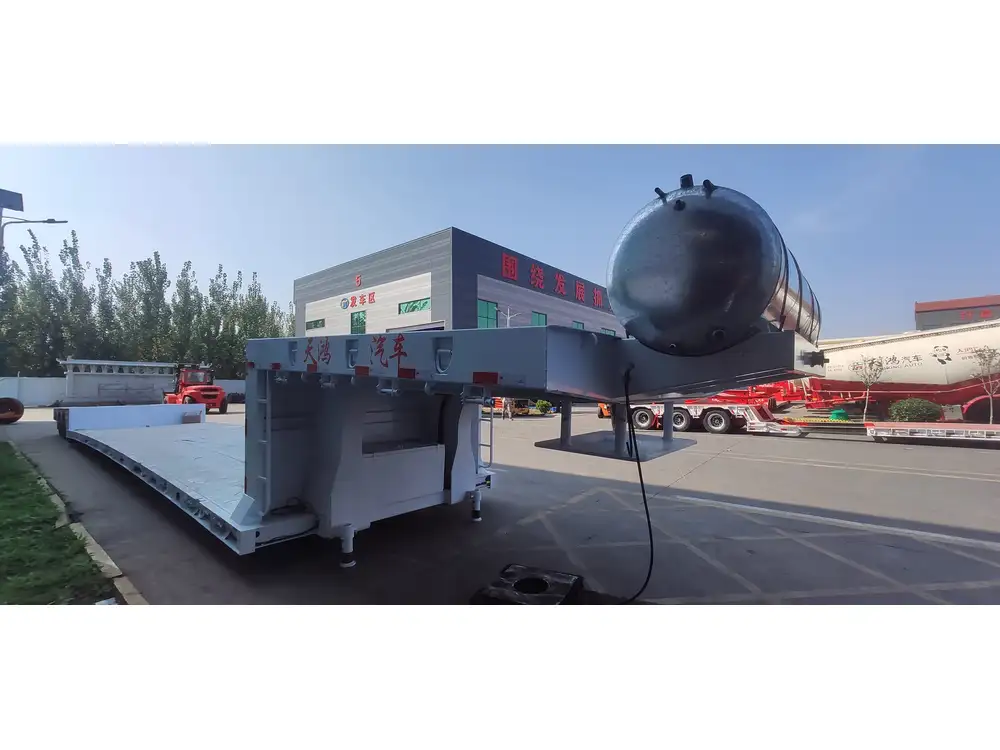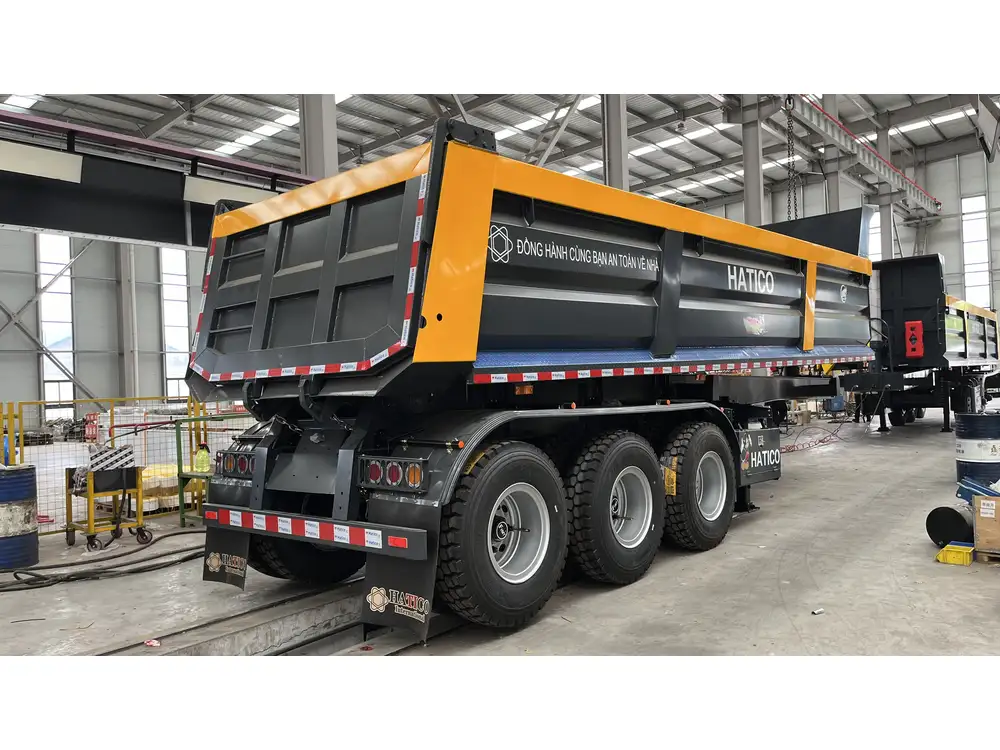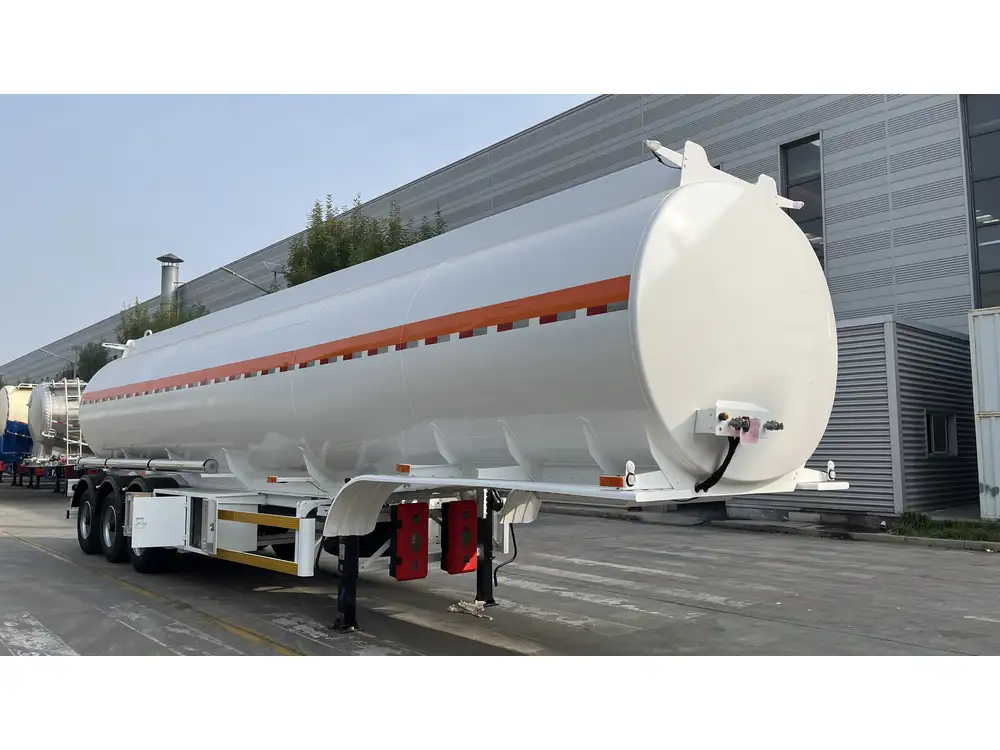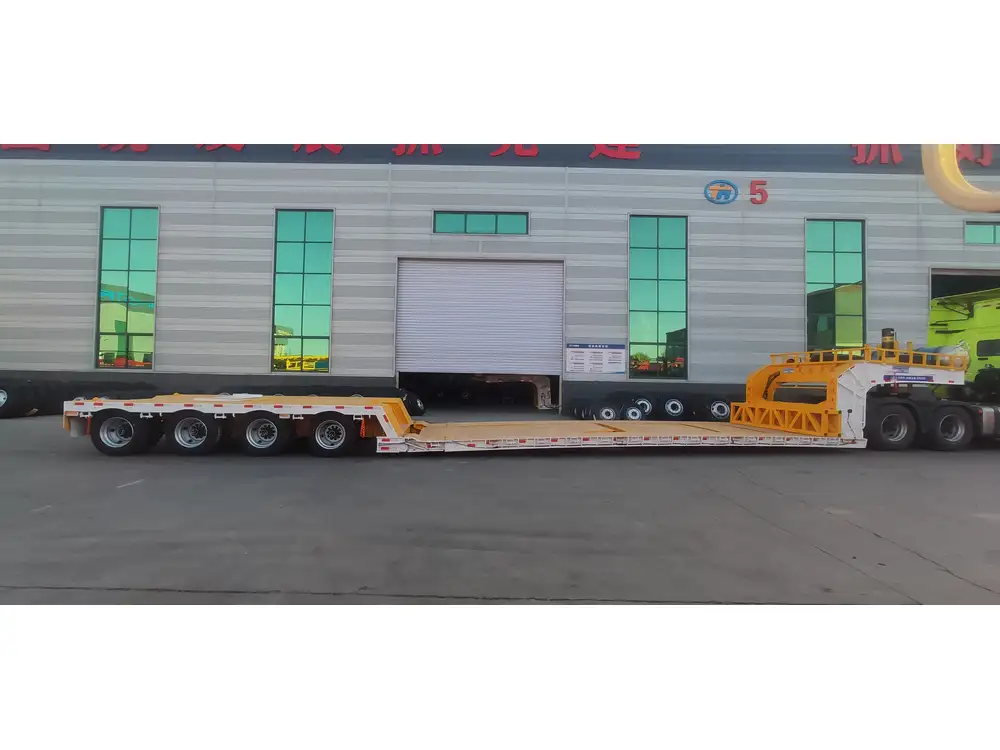Ensuring the secure transportation of goods is paramount in the logistics and transportation industry. At CarMax Vehicle, we understand that the integrity of your load directly impacts your business’s efficiency and reputation. One of the fundamental aspects of load security is mastering the art of tying down loads using the appropriate knots. This comprehensive guide delves into the intricacies of various knots, providing you with the knowledge needed to maintain safety and compliance during transportation.
Table of Contents
- Importance of Properly Securing Loads
- Essential Knots for Tying Down Loads
- Step-by-Step Guide to Tying Essential Knots
- Comparative Analysis of Load-Tying Knots
- Best Practices for Securing Loads on Semi-Trailers
- Tools and Materials for Effective Load Securing
- Common Mistakes to Avoid When Tying Down Loads
- Safety Considerations in Load Securing
- Conclusion: Enhancing Load Security with CarMax Trailer Solutions
- Frequently Asked Questions
Importance of Properly Securing Loads
Securing loads is not merely a regulatory requirement but a critical practice that safeguards both the cargo and the transportation unit. Improperly secured loads can lead to accidents, cargo damage, increased operational costs, and legal repercussions. By employing the right knots and securing techniques, drivers can ensure that goods remain intact and stable throughout transit, minimizing risks associated with shifting loads.

Essential Knots for Tying Down Loads
Selecting the appropriate knot is crucial for load security. Below is a detailed overview of essential knots that every fleet operator and driver should master.
Bowline Knot
The Bowline Knot is renowned for creating a fixed loop at the end of a rope, which is easy to tie and untie, even after bearing heavy loads. Its ability to resist accidental slippage makes it ideal for attaching ropes to anchor points on a trailer.
Truckers Hitch
The Truckers Hitch is a versatile knot that provides mechanical advantage for tightening ropes, ensuring that loads are secured with adjustable tension. This knot is particularly useful for securing bulky or irregularly shaped cargo.

Figure-Eight Knot
The Figure-Eight Knot is a stopper knot that prevents ropes from unraveling or fraying. It is commonly used at the ends of ropes to prevent slipping through vehicle hooks or tie-down points.
Square Knot
Also known as the Reef Knot, the Square Knot is effective for joining two ropes of equal diameter. While not suitable for heavy loads, it is useful for securing lightweight or non-critical cargo.
Clove Hitch
The Clove Hitch is a quick and effective knot for attaching a rope to a post or rail. Its adjustability makes it suitable for preliminary securing before applying tighter knots.

Step-by-Step Guide to Tying Essential Knots
Mastering each knot requires understanding its specific tying technique. Below, we provide detailed instructions to ensure proficiency in securing loads.
Bowline Knot: A Reliable Loop
- Form a Small Loop: Create a small loop (the rabbit hole) on the rope, leaving sufficient standing end (the working end).
- Pass the Working End: Bring the working end up through the loop from the underside.
- Wrap Around: Pass the working end around the standing part of the rope.
- Return Through the Loop: Bring the working end back down through the loop.
- Tighten: Pull the working end to secure the knot, ensuring the loop remains fixed and does not shift.
Truckers Hitch: Adjustable Tensioning
- Create a Loop: Form a fixed loop several feet away from the anchor point.
- Run the Rope Through the Loop: Feed the working end through the loop to form a second loop.
- Pulley System: Use the second loop to create a pulley-like system, allowing tension to be applied.
- Secure with Half Knot: Finish by tying a half knot around the standing part to lock the tension.
- Adjust and Tighten: Pull the working end to apply tension, securing the load tightly against the trailer.

Figure-Eight Knot: Secure Stops
- Make an Overhand Loop: Create an overhand loop in the rope.
- Form the Eight Shape: Twist the rope to form a shape resembling the number eight.
- Thread Through Itself: Pass the working end through the loop, following the eight pathway.
- Dress the Knot: Ensure the knot is neat and flat to prevent bulkiness and slipping.
- Tighten: Pull both ends to secure the knot firmly, acting as a stopper to prevent slipping.
Comparative Analysis of Load-Tying Knots
Understanding the strengths and limitations of each knot enables the selection of the most appropriate one for specific scenarios.
| Knot Name | Strengths | Limitations | Ideal Use-Cases |
|---|---|---|---|
| Bowline | Easy to tie/untie, creates a secure loop | Can become untied under cyclic loading | Attaching to anchor points, forming loops |
| Truckers Hitch | Provides adjustable tension, secure locking | Requires practice to master | Securing bulky loads, adjustable tensioning |
| Figure-Eight | Prevents slipping, easy to inspect | Bulkier than other knots | Preventing rope slippage, stopper knot |
| Square Knot | Simple to tie, effective for lightweight loads | Not suitable for heavy or critical loads | Joining two ropes, non-critical securing |
| Clove Hitch | Quick and adjustable, easy to reposition | Can slip if not under constant tension | Temporary securing, adjusting load position |
Best Practices for Securing Loads on Semi-Trailers
Adhering to best practices ensures that ties remain secure throughout the journey, mitigating risks associated with load shifting.
- Assess the Load: Understand the weight, shape, and nature of the cargo to determine the appropriate securing method and knots.
- Choose High-Quality Ropes: Utilize ropes with sufficient tensile strength and durability, suitable for the load’s demands.
- Use Multiple Tie-Down Points: Distribute the load evenly by securing it at various points to prevent imbalance.
- Double-Check Knots: Inspect each knot for firmness and correctness, ensuring they are tied properly to hold the load.
- Regular Inspections: Periodically check the tie-downs during transport, especially on long hauls or rough terrains.
- Avoid Overloading Ropes: Ensure that the ropes are not overstressed beyond their rated capacity to prevent breakage.
- Maintain Knot Knowledge: Regularly practice and update knot-tying skills to handle different load scenarios adeptly.

Tools and Materials for Effective Load Securing
Equipping yourself with the right tools and materials enhances the efficiency and reliability of load securing practices.
- High-Tensile Ropes: Essential for creating strong ties that can withstand significant forces.
- Ratchet Straps: Provide mechanical advantage for tight and secure load binding.
- Anchor Points: Utilize well-designed anchor points on trailers for attaching ropes and straps.
- Tensioners: Devices that assist in maintaining consistent tension on the ropes.
- Protective Gear: Use sleeves or covers to prevent rope damage and minimize wear from friction points.
Common Mistakes to Avoid When Tying Down Loads
Even experienced operators can make errors that compromise load security. Awareness of common mistakes helps in preventing accidents and ensuring compliance.
- Insufficient Knot Security: Failing to tie knots tightly enough can lead to slippage and load shifts.
- Using Inappropriate Knots: Selecting knots that are not suited for the specific load or securing method reduces effectiveness.
- Overloading Ropes: Exceeding the rope’s capacity increases the risk of breakage under stress.
- Neglecting Regular Inspections: Ignoring periodic checks can allow minor issues to escalate into major problems.
- Improper Knot Tying Technique: Incorrectly tied knots may unravel or fail under load, compromising security.
Safety Considerations in Load Securing
Prioritizing safety in load securing practices protects both the cargo and those involved in transportation operations.
- Compliance with Regulations: Adhere to local and international guidelines for load securing to avoid legal issues.
- Training and Education: Ensure that all personnel are trained in proper knot-tying techniques and load securing methods.
- Use of Reflective Markings: Enhance visibility of tie-downs to prevent accidents, especially in low-light conditions.
- Emergency Preparedness: Develop protocols for addressing load shifts or securing failures during transit.

Conclusion: Enhancing Load Security with CarMax Trailer Solutions
At CarMax Vehicle, our commitment to excellence extends beyond manufacturing top-tier semi-trailers. We strive to empower our clients with the knowledge and tools necessary for optimal load security. Mastering the appropriate knots for tying down loads is a critical component in ensuring safe and efficient transportation. By implementing the techniques and best practices outlined in this guide, you can enhance the reliability of your operations and safeguard your cargo against unforeseen challenges.
Investing in high-quality tie-down equipment from CarMax Trailer, alongside proficient knot-tying skills, positions your fleet for success in the competitive transportation landscape. Trust CarMax Vehicle to support your journey towards unparalleled load security and operational excellence.
Frequently Asked Questions
1. What is the most secure knot for tying down heavy loads on a semi-trailer?
The Truckers Hitch is highly recommended for securing heavy loads due to its ability to provide adjustable tension and a secure hold. Combined with a Bowline Knot for creating fixed loops, it offers robust load security suitable for large and heavy cargo.

2. Can I use the Square Knot for all types of cargo securing?
While the Square Knot is effective for joining two ropes of equal diameter and securing lightweight loads, it is not recommended for heavy or critical applications. For more demanding scenarios, knots like the Truckers Hitch or Bowline are more appropriate.
3. How often should I inspect the knots and tie-downs during a trip?
Regular inspections are essential, especially during long hauls or when navigating rough terrains. It is advisable to check the knots and tie-downs at least every 150 miles or every 2-3 hours of driving to ensure continued security.
4. What materials are best for ropes used in load securing?
High-tensile synthetic ropes, such as polyester or nylon, are preferred for load securing due to their strength, durability, and resistance to abrasion. These materials maintain their integrity under varying weather conditions and heavy loads.

5. Are there any automated systems for load securing that can replace manual knot tying?
Yes, there are automated load securing systems, such as tensioning devices and ratchet straps, that can complement or, in some cases, replace manual knot tying. These systems provide consistent tension and ease of use, enhancing overall load security. However, understanding basic knot-tying remains valuable for scenarios where manual intervention is necessary.



